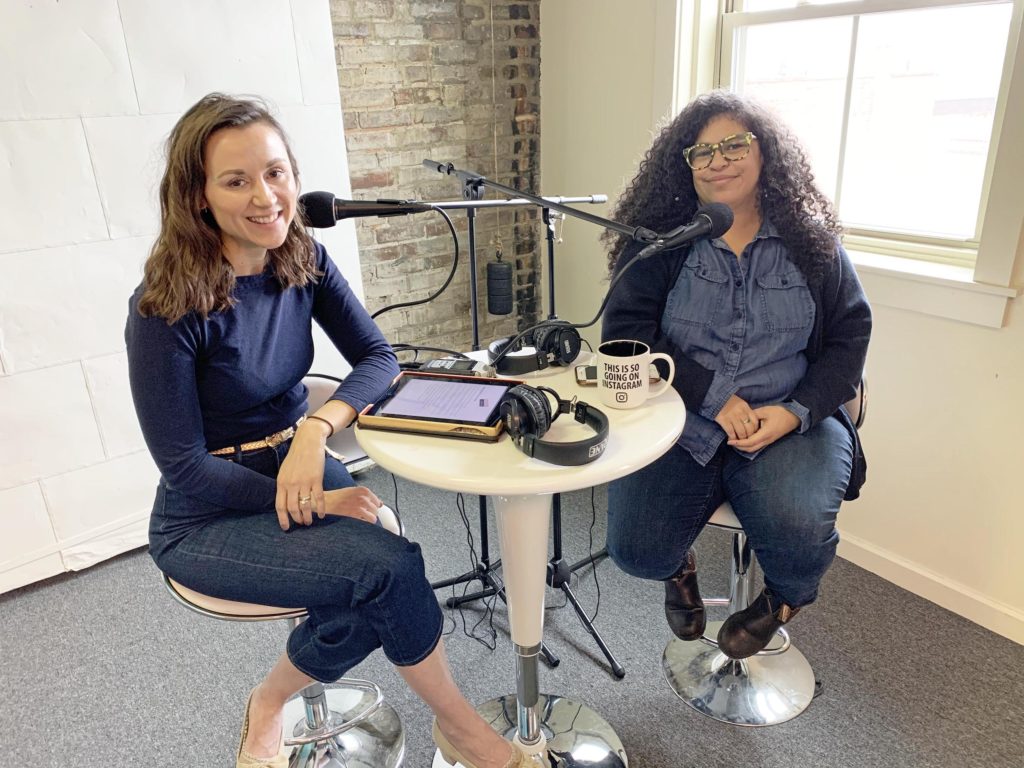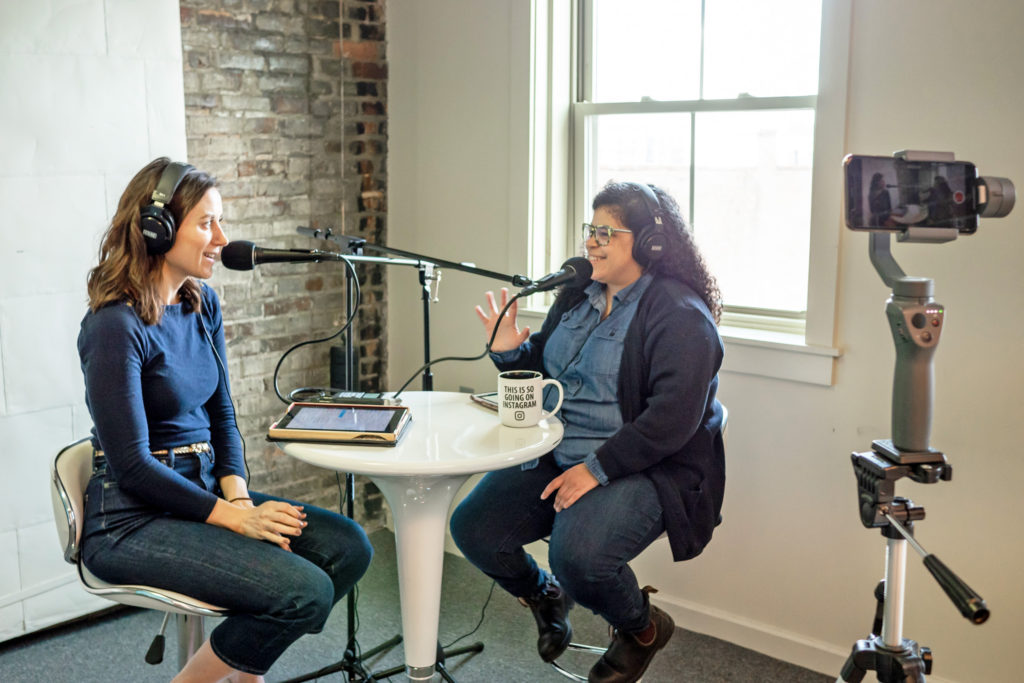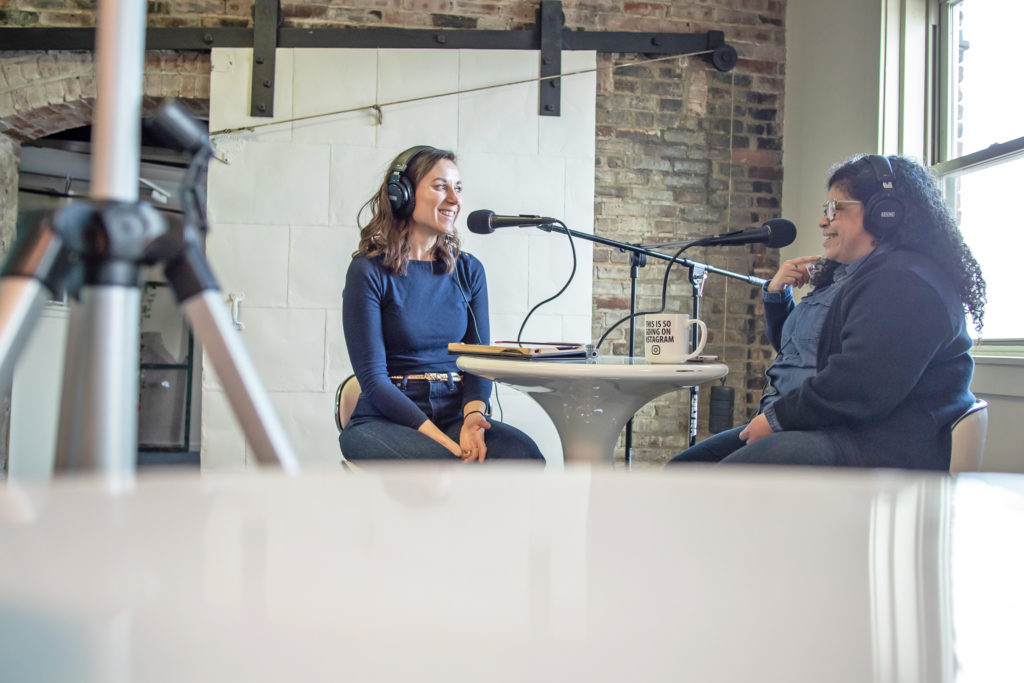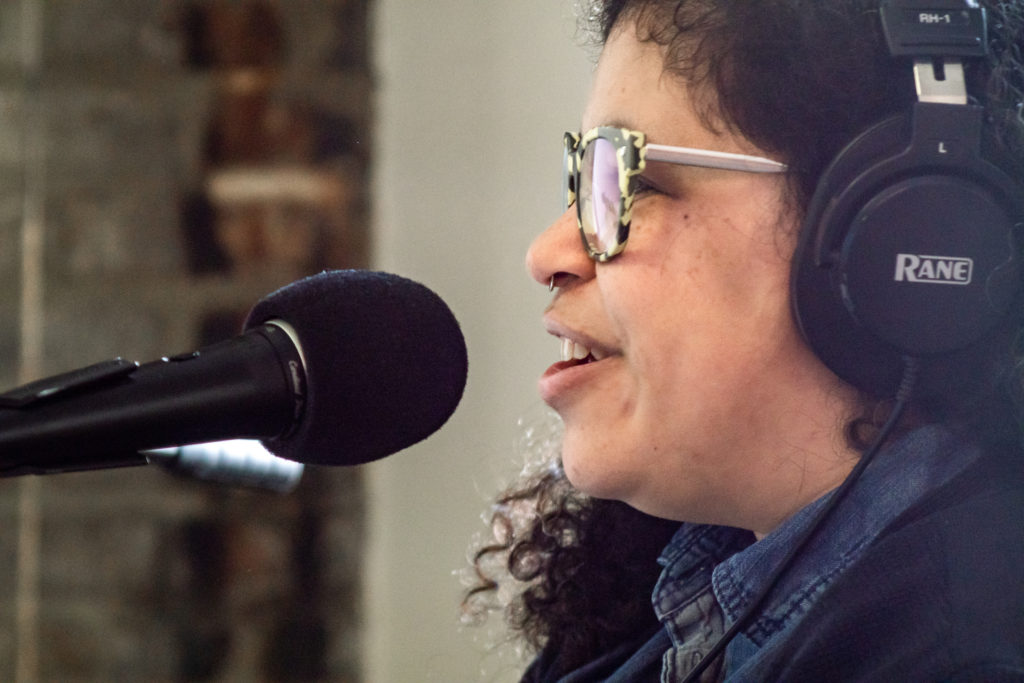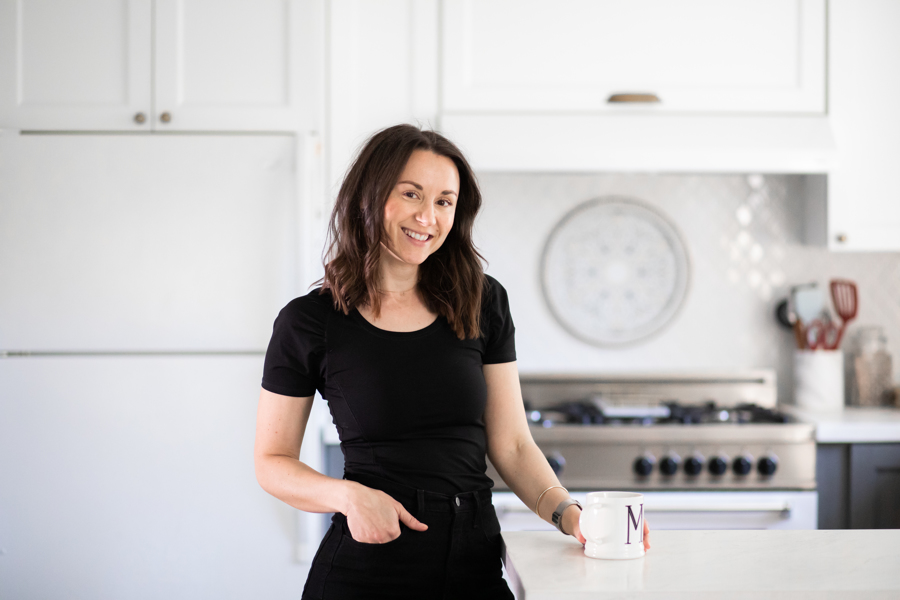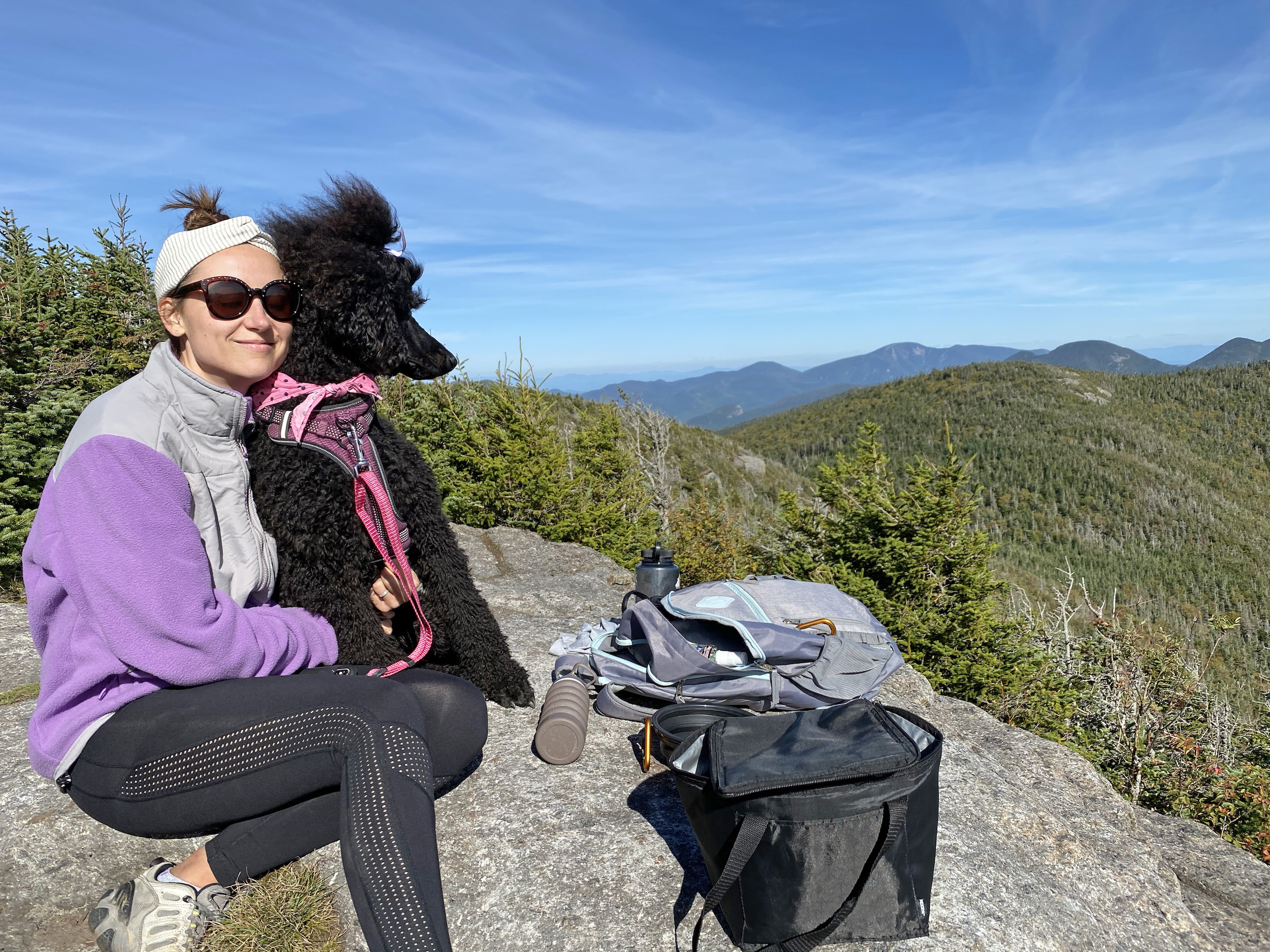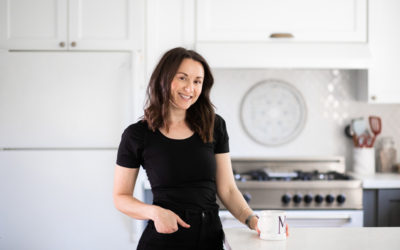If you love food and photos of food, then you are in for a real TREAT. Stephanie Gravalese is a content creator, freelance writer & storyteller of all things food, beverage and culture. We recorded this interview before the Covid-19 pandemic, but Stephanie’s advice about diversifying your work could not have come at a timelier event in history.
Today she shares how her passion for food, paired with hard work & multiple streams of income, is the secret to her success. She also shares her top favorite places to eat and drink in the Capital Region at the end.
Tell us about yourself, where did you grow up and what did you want to be when you grew up!
I grew up in Western Massachusetts. A lot of people think of Boston when I say Massachusetts but actually you get on the Mass Pike, drive until there’s woods and I grew up down the road from a dairy farm. Very country.
As a kid, I was always asking “Why?” Always wanted to know context. I always wanted to know more than what was right in front of me.
I am a freelance food writer and content creator. I write about food in many ways, whether it’s restaurants and how they relate to communities. I interview chefs, food producers, artisans. I look at food trends and how they impact a space or even a country. Lots of things in and around food.
Do you have a degree in writing? Have you always wanted to be a food writer?
I went to school in Mass called Hampshire College and that is a place where you make up your own major. Actually Lupita Nyong’o and I were in school at the same time, we have some friends in common. Lots of creative thinkers, very free spirits.
My background was the psychology of marketing. And why, why are we selling these things. I’ve always loved the story behind brands more than just why are we both wearing navy blue? Navy blue might be the new grey or the new black.
For me as a kid, very early on, I was someone who was in the foster care system. Prior to being in foster care there were times where we didn’t have a lot of food. So food for me was always, once I was in my foster family, food became a very important part of my life.
Whether it was community, understanding foods from different cultures. My family is from the DR and Italian American, so there are things that are very American that I just didn’t grow up eating. Once I was with my foster family I was introduced to more of those things, like bologna.
How old were you when you were adopted?
I was 9 and my younger brother was 3. There are a lot of memories, before and after being adopted. I remember eating mangos and plantains or some Italian foods. Food has been the connecting link for my entire life. The family I grew up with, my foster family, was Polish American. I grew up eating kielbasa, and galunkies.
Growing up we had a lot of American and Eastern European foods. And again, learning why. Why is food this way? Why do we do this? etc. Food has been a constant theme. Even going into marketing, and wanting to know more about creating brands and working under brands.
Ultimately after college, my first food related job I was a dishwasher in a pizza place. It was a greek pizza place, I went to greek markets and now I’m a lifelong fan of feta cheese.
How did you become a writer? What do you write about?
Currently I write most often for the Times Union. The features I write for them are for restaurants, whether they’re emerging trends, how food interacts with the community. For instance I had a piece come out about beer related running clubs. Some of these have been in place long before the craft beer boom. Also why beer? There are plenty of reasons, not only in the US but around the world. Food as it relates to culture. Other examples of food trends I’ve written about in the Capital Region are non-alcoholic cocktails are an emerging trend.
I discovered you because you wrote a story about Storied Coffee.
Absolutely, and as someone who works from home most of the time I’ve spent a lot of time in coffee shops. Thinking about what are the cozy places you can go to and still work out of. I’ve written about Storied, Walton’s in Saratoga. There is definitely the food, the dishes in front of us but there’s also the space, and the artisans who create the food.
I was talking to Oliver from Primo Botanica, the chocolate folks. Learning their intention, why they created that brand of chocolate. There’s a finished product in front of but the intention and the story why, those are the things that really excite me.
I’m not a reviewer, I’d love to try my hand at it sometime. The people, the places and how they relate to our culture are some of the things I talk about in my stories and in my content.
You write about food as it relates to culture but you also have clients. What do you do for your clients?
In addition to writing for newspapers, magazines and websites, I also create content and advise food brands on branding, creating content, social media support, product photography.
I’m working with a chocolate company that has new packaging that’s not typical for a chocolate bar so I have been working with their director on how to sell this. What do we want to invoke, how do we want consumers to feel when they see this product. Is this a chocolate bar you can carry in your purse? Is this a chocolate that can wrap up easily?
Going through that process and working on a creative brief and taking some photos they can use on social media. It’s more on the content side so its photos and social media. And since I have been the head of marketing for food brands, they always ask questions or bounce some ideas off of me.
You said in your past life you were a publicist. I can see how this comes full circle.
After my brief stint as a dishwasher, I worked in government. I was an aid to a state rep and one of our main issues was agriculture so I was on farms, working with teachers that were part of programs on aspects of farming and food. There was the advocacy portion and then I went on to work for some restaurants and hotels in the Berkshires as a marketing director.
I was really a publicist in full gear, bringing photographers in to get photos of chefs breaking down pigs or going to the beerhouse where they were cooking, getting media to come, and telling the stories of those hotels and restaurants. Over time, I realized I could tell those stories. Working in the restaurant scene in an administrative way, I figured out what places people liked to go and what they wanted.
I joined Instagram to connect with family friends, and then as I started traveling to trade shows I was the person always asked, “Where are we going to eat?” because they knew I was always researching different places. I had the Yelp pre-list ready at all times.
It was actually on Instagram the editor from the Berkshire Eagle reached out to me saying that I had a really good eye, took great photos, and asked if I would write for them once or twice per month for a hotspot write up, 300 words, and paid a modest fee. You can use that fee and go buy this cocktail or this dish. I would go to restaurants, and I don’t call it a review more like a taste-maker. In the Berkshires where are the places to go? Where can you get a great cocktail or those mini hotdogs?
Is that the Berkshire Foodie?
Berkshire Foodies came after. The Berkshire Eagle has these little hotpot sections. I went, I had a dish, what was it like. I’m choosing the place because I want people to know about it. More of a taste-maker perspective, I remember thinking 300 words, that’s so long! Now I’m writing much bigger stories and features. Over time I started interviewing chefs, started to pitch, writing bigger pieces.
How did you pitch yourself?
It took time. Even just having the confidence to say I want to do more. Eventually I asked, I ended up developing and writing more profiles, able negotiate a slightly higher rate.
You put your time in.
Absolutely. The fact that I can say I started in print, most people get their start online or on instagram and that’s all great. But to say that I started from print is something I’m really proud of. I’ve had some really great editors.
Lindsay from the Berkshire Eagle and Sara Tracy from the Times Union have both been really great editors. They have been supportive of my ideas. Even if the idea is not 100% on but they’ve been great to help me develop my ideas. I’ve learned from their feedback.
It’s scary but taking that chance, putting yourself out there, but I’m glad I did. That led me to bigger pieces, I had a restaurant column for a while. Then I started writing for their sister magazine and traveling into Vermont and writing there. Then I started pitching other publications outside of the Berkshires, that was an exercise in putting myself out there. Writing for the hometown paper is great but putting myself out there for other places felt very scary. What really helped me there is a lot of online groups that I was able to get resources on how to write a really well crafted pitch.
So you practiced?
Absolutely, a lot of times for all of the things I’ve done there are many pitches that have not landed. You can even write it all then the article gets cut. It happens, it’s part of the process.
As a business, you’re a freelancer and you have your marketing clients. You’ve diversified your income, can you talk about that and why it’s important?
That has been the key for me is diversifying what I do. Not only writing for newspapers and magazines but a retainer client. Retainer client being we have a contractual agreement whether its a 3 month project or a year long contract to support.
So the contract clients are a more steady income?
Exactly. I’ve done marketing work for some clients that aren’t food related. I worked with the marketing department at BARD and taught them some marketing best practices to do their own social media and create content.
Some food clients will be a 3 month contract to do their press kit. Another client has reached out about doing recipes and photos for them. So it may not be a steady stream of income but it’s more steady than an article here and there. It’s a balance, diversifying is key.
Since you do have a background in marketing, how have you been able to build your personal brand on social media?
Engagement. It sounds cliche but really it’s interacting with folks. Photos are key, consistency is key. Posting on a regular basis. On Instagram, posting on your story and your feed. Engaging, reply to folks who comment. If someone follows you, shoot them a message, “Thanks for following me, I look forward to connecting with you” is really all it takes to keep following you.
And it tricks the algorithm…
That’s true. I know it’s been a challenge since the algorithm changed and I’ve noticed a change on how my content is shown to other people.
Instagram Stories are something I suggest whether you’re a brand or a personality. I’m so used to as a former marketer, there’s always a product and a customer.
One of my missions for 2020 is to be more in front of the camera. Whether that’s in my feed or in stories. Stories are key. Folks will look on their phones like they’re watching TV. People may not look at your feed but stories are a quickly consumed media. There was a time where things were so beautifully curated but people want to see the real you.
Some days it’s not all big spreads of food or going to restaurants. A lot of it is just making bread over the weekend, recipe testing. Not all of it is exciting, but it’s what we do. Who are the people behind your brand? What are the things that get you through the day?
I do a bit called Meals in My Car with Maggie. It seems silly but I get a lot of messages about it, people think it’s funny or it’s interesting. To your point, people want to see that. Sometimes I feel a little narcissistic, why do people care what I’m eating? But at the end of the day, people do want to know what you’re like outside of your business.
I know for myself, I’m trying to not post things not related to food. We all eat but I also have friends and a life. That’s a goal I’ve been looking to do more of. Don’t go overboard per hour because the algorithm will block you if you engage too much or use those services. Slow and steady wins the race. In my experience it’s the traffic to your profile that’s organic. Engagement is still important but it’s the quality of your photos and who’s coming to your profile.
What do you think is the best part of your job?
Saying it’s the food would be too simple. Discovering new places seems like a small thing. When I lived in the Berkshires I would drive an hour to come to have coffee at Superior Merchandise. To live here now, to discover things and tell those stories, it’s fantastic.
I spoke with a great beekeeper at Beehollow Farm. To tell folks they have beekeeping classes, what happens to bees in the winter, the global shift affects bees and folks in the region, telling those stories that won’t come into people’s everyday life is really special to me.
My more international stories are about getting people to think outside of the box. It’s so much fun to hear these stories and learn about different cultures. It’s also made me a better cook. Starting in the taste-maker spot, I’ve been learning to be a better cook.
The piece I’ve been working on there are now cooking classes you can take. I took a class and the goal was to see if it would make me a better cook. So I chose one of the hardest recipes in the class, an italian ragu. I broke down meat, and we’re not talking about cooking down some ground beef. It was a multi day process, my significant other is a chef and offered to help. It’s a lot of learning, finding the good places to eat and feeding the people I care about.
What are your top 5 places to eat or drink in the Capital Region?
For tacos, Oaxaquena Triqui. Right off of Central Ave in Albany.
For coffee, Superior Merchandise.
Oscar’s Smokehouse for bacon and meat.
I just went to Unified Beerworks in Malta and I had a flight that included a beer had beet in it. It’s the color of beet. You had that sort of a little but sweet but savory punch and that was exciting for me.
If you go to Hudson, Suarez Brewing they have a black lager called T-shirt that is really fun. I will say it’s been exciting to dive into the capital region, what’s happening in the beer scene is amazing. The history of Albany as a beer city is fantastic.
For wine 22 2nd Street, the natural wine shop. That’s part of Clark Hospitality. Those folks know a lot about natural wine and they seem to be doing a lot in the community.
Have you been to Lost & Found? It’s across from Nine Pin Cider, they’ve been doing some great things for desserts. Dessert and brunch are some great things to check out.
What advice can you give about taking photos of food?
Lighting is important. If you are in a restaurant, if you can, choosing a seat by the window is key. If you’re using an iphone, make sure everything is in focus. There are different angles you can choose from. Take multiple shots and work quickly. Apps you can use Vsco, Lightroom is free for your phone, snapseed.
What do you typically do for lunch?
Sometimes it’s leftovers. Recently we did spaghetti with a vegan ragu. Today it’s a buttermilk bisque soup.
Can you talk about this co-working space?
Collective Effort, 415 River St in Troy right next to Brown’s Brewing. This is a co-working space that focuses on production if you’re a podcaster, photographer, videographer, music production. They not only rent out space to do that type of work or if you’re one of those people typing away on your laptop it’s a really inviting space for you to come work.
There’s usually snacks, we’ve got coffee, it’s a great place to build community, and you may be sitting down the table from the next person you’ll be collaborating with. They just had their grand opening a few days ago, they’re definitely worth stopping by if you’re working by yourself in a coffee shop.
Website: www.stephanita.com
Instagram: @stephanitaeats


